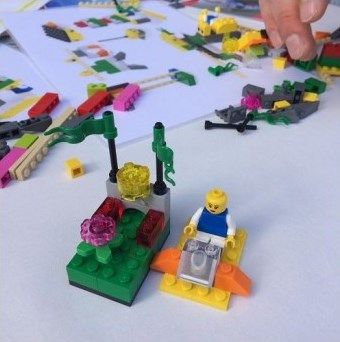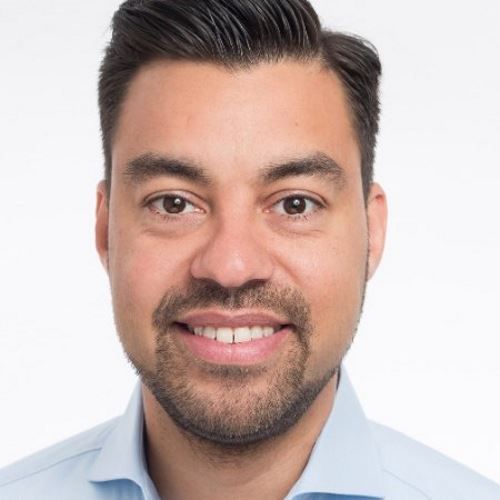From the very start playing is important for our development: with dolls, building blocks and other toys we re-enact happenings, relationships and ideas. If you have ever tried to disturb children during playing, you know, how focused they can get. With lots of emotional closeness and ambition, with own rules and clear judgment they are fixated on the scene. When they play, they speak with themselves – even when there is no one around. Playing supports logical thinking and communication. On top it has the power to make us self-confident and happy.
Would it not make sense to give a little bit of this spirit into our meeting rooms, so colleagues connect enthusiastically and resourcefully in lively sessions? Playing is often considered as an end in itself or as an activity to pass the time, objections arise: “In our meetings we talk about hard facts and decisions. We have no time to play around.“ My argument is: How good and effective are your meetings really? Most business meetings are often painful, chaotic and at the end without a result. Patrick M. Lencioni calls this “Death by Meeting”. He comes to the conclusion that we need an encouraging and engaging communication culture to create useful results.
With LEGO bricks to better results
In the mid-1990s the former CEO of the LEGO Group Kjeld K. Kristiansen and the two Swiss professors Johan Roos and Bar Victor looked for a better way to create business strategies. They started to combine business related questions with the imaginativeness of employees and bricks – today LEGO SERIOUS PLAY. It is a participative problem-solving facilitation method, during which the participants answer questions with the help of LEGO models.
The process of a LEGO SERIOUS PLAY workshop is explained quickly: The facilitator asks a question. The participants built in a limited time a LEGO model, which incorporates their answer. Afterwards, each person explains the model to the entire group. The gathered information are reflected mutually.
It is the LEGO SERIOUS PLAY facilitator’s job to craft highly relevant questions for the attendants and to watch over this sequence of question-building-sharing-reflection. Furthermore, he defines if individual models, shared models or connections between models are to be built.
With questions like: „Has this brick a meaning? Is there a meaning for this brick being transparent or this specific color?“ LEGO models are explicitly explored. This clarification helps to not misunderstand or misinterpret the model from others. And through always questioning the model, the builder is not cross-questioned – a substantial advantage of the LEGO SERIOUS PLAY method. During the dialogue details emerge which would possibly not be expressed otherwise. This active listening and enquiring generates a high positive experience for the participants. It often leads to much better communication after such a workshop. With relevant information, feedback and solution focused debates participants create new insights, knowledge and alternative solutions.
No bullet points and backs to the wall – but bricks to click
LEGO SERIOUS PLAY models are three dimensional and better to understand than for instance a presentation. As it is easier for us to understand, see and feel a new apartment three dimensional than two dimensional, while looking at the floor plan. With models which are visible throughout the workshop, the participants are constantly confronted. The answers cannot be ignored any more.
To use the LEGO SERIOUS PLAY method requires a courageous client who truly wants to hear the answers to the questions raised. Imagine the following assignment: A team which is located throughout the country get together for a strategy meeting. During the last months the department was exposed to more and more expectations and new assignments. The workshop goal is to define the teams success factors for the future work and to improve the motivation by focusing.
After a short introduction into the LEGO SERIOUS PLAY method the participants develop individual models as answer to the question: Who are you and what characterizes your contribution best? The next question is: What characterizes our team? This time a shared identity model is build. This step may take up to an hour. The participants discuss the status quo, their strengths and what makes the team tick. During the next phase questions focusing on the outside world are asked: “How are we perceived from your colleagues in other departments? What influences our work? Either totally new models are built or already existing models are extended – depending on the workshop concept.
Slowly a whole landscape of LEGO models is created, so to speak the visible thought framework of the participants. With this visualization one can fearless simulate unusual or uncomfortable scenarios to develop optimal solutions. In the third part of the workshop the participants map their aspirations: How do we want to work in the future? How do we want to be seen? What services will we offer? And how does this relate to the status quo?
Questions around team development, strategies, projects and business models are possible. Two remarks:
Complex situations and connections cannot be made visible within two to three hours. Therefore, plan enough time. A poorly moderated workshop stays at best playful. Please be aware to choose an experienced LEGO SERIOUS PLAY facilitator. Best would be, that he brings along further methods and a proven track record. For the LEGO SERIOUS PLAY method as well as for other workshop methods counts: If the workshop is badly lead, the participants will not use this method again with confidence. Bad experiences stay in ones mind and this could mean for LEGO SERIOUS PLAY: the participant will not touch a brick again outside of the children’s room. Then the following statement of the Irish Nobel Price- and Oscar-winner George B. Shaw applies: “We don’t stop playing because we grow old; we grow old because we stop playing.”
Pick a brick and make a point!
Let’s face a fact: What the participants built and explain during a workshop with the LEGO SERIOUS PLAY method was already there before the workshop. Maybe spread in the heads, maybe vaguely discussed or not combined in a shared vision.
When bullet points, illuminated walls and experts in the spotlight with their back to the wall are not enough, remember the LEGO SERIOUS PLAY method: round after round focused and genuine answers are created and new knowledge emerges. You can experiment with possible solutions in a save environment and this is the breeding ground of little as well as disruptive innovations.
No, the LEGO SERIOUS PLAY method is not suitable for all questions nor for all meetings. But if every participant needs a voice and must be heard for further development and if you need to get hold of every idea in the room to create new solutions, I recommend: Bricks not cookies! Then a workshop with the LEGO SERIOUS PLAY method creates more understanding, engagement and communication.
Should you have any questions or if you want to experience LEGO SERIOUS PLAY yourself, why not come to my next LEGO SERIOUS PLAY Meetup in Berlin or visit me at [ki:]®Learning.
Original post by Julian Kea on www.microtool.de

